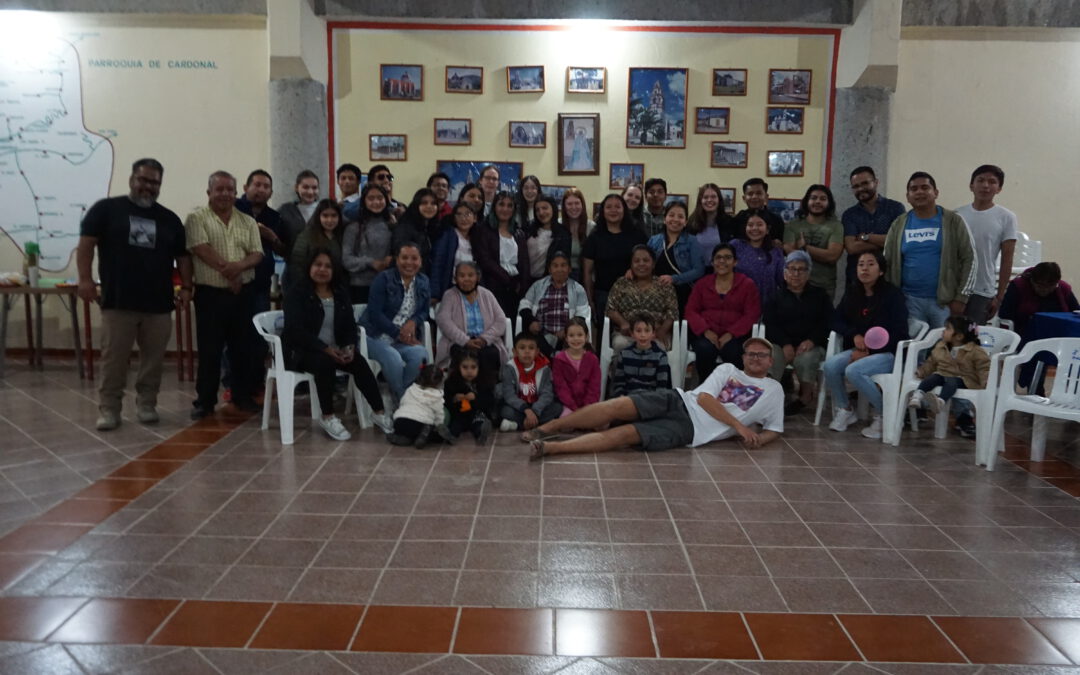If you want to read about the “El Samaritano” project, which supports asylum seekers on their way to the USA, then look below! I also write about the situation for asylum seekers in Mexico.
Mexico is a very special country for me and was therefore a special stop on this trip. Mexico is coming home for me. Mexico is living hundreds of beautiful memories all over again. Mexico is eating the best food in the world. Mexico is meeting friends I haven’t seen in a long time and who I really missed. Mexico means feeling as comfortable as I can. Mexico is home for me! And that felt really good after 5 months of travelling!
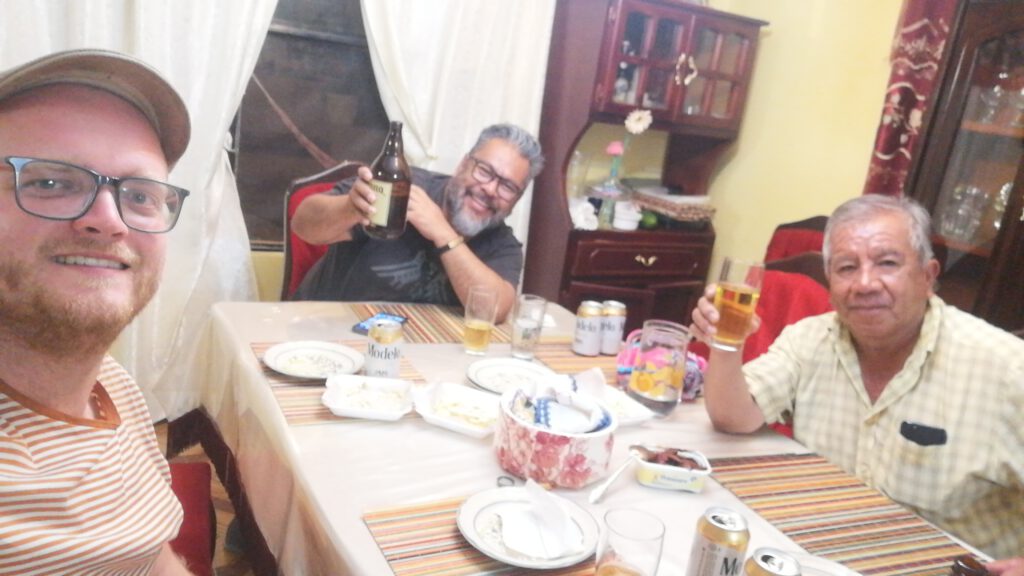
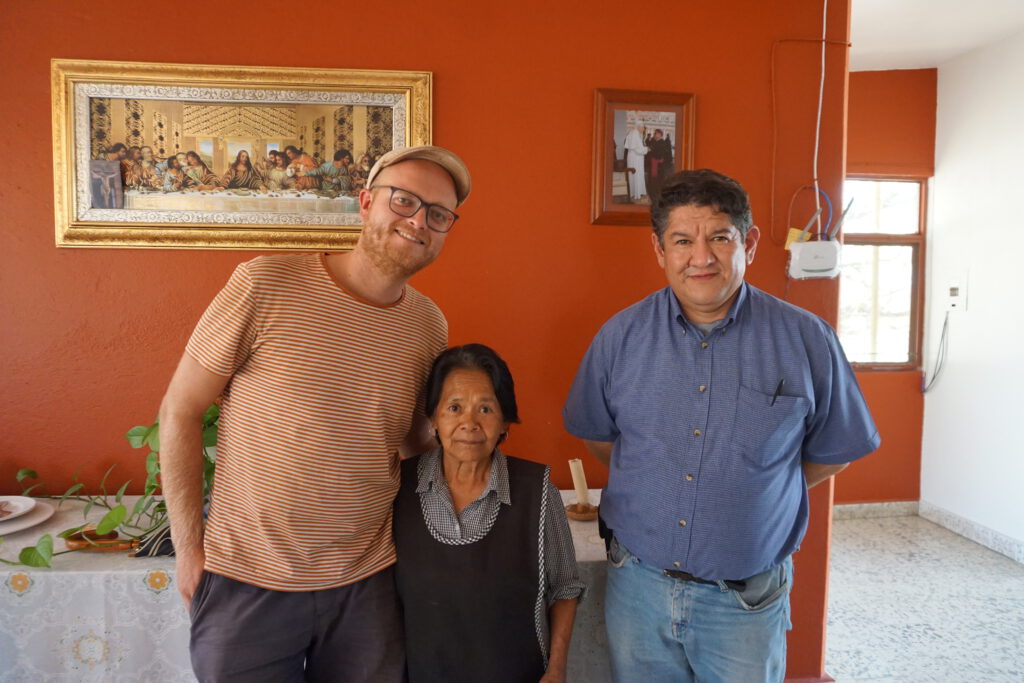
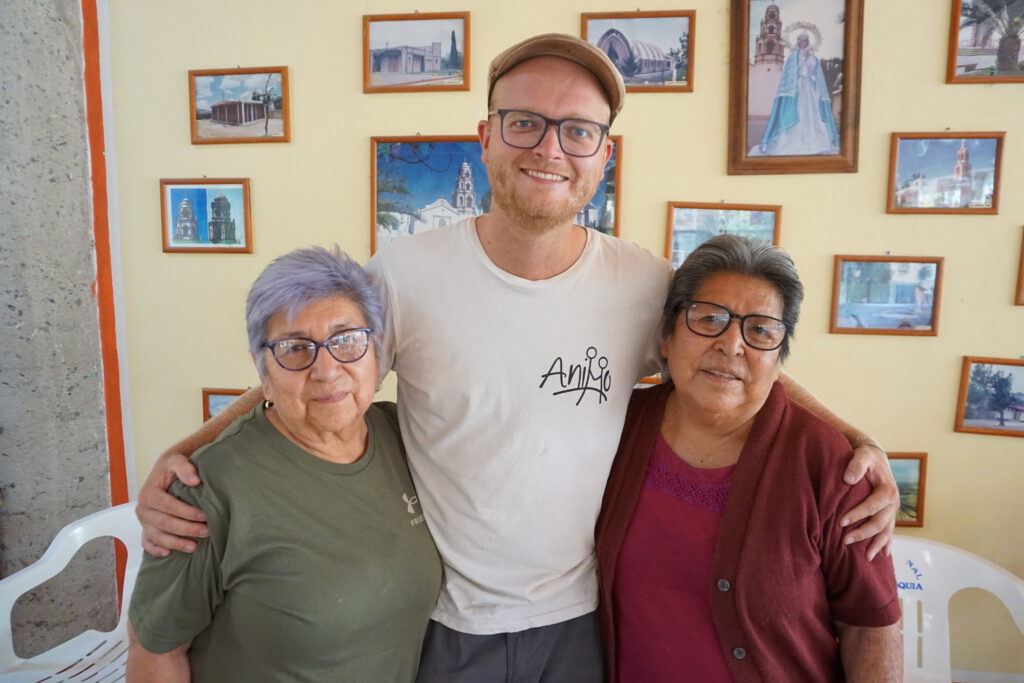
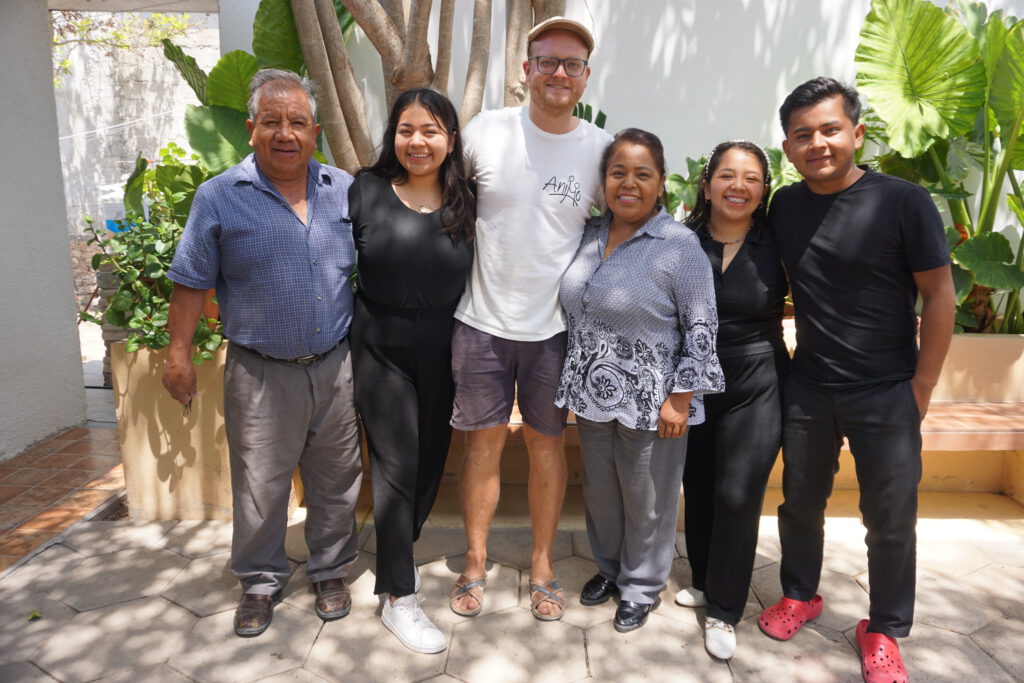
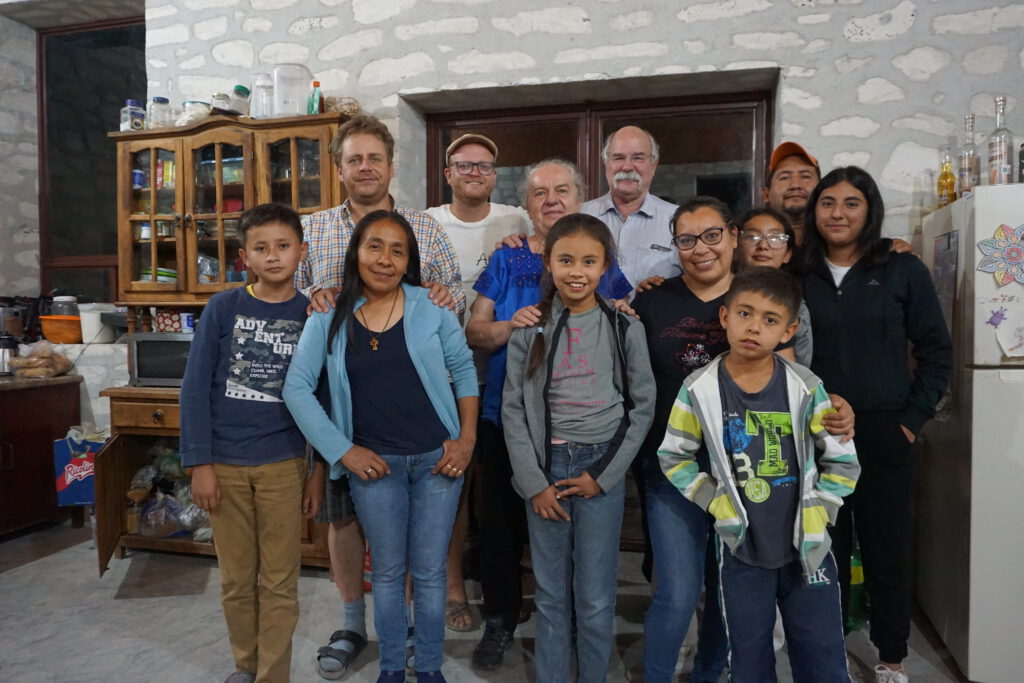
Mexican hospitality: 4 weeks without hunger
In Mexico, I don’t have to get used to a new currency. In Mexico, I know what I can buy where and how much it costs. I know the routes, the people, the history and politics. So on the one hand, Mexico was relaxing: I could unpack my backpack in Cardonal and not have to pack it for a fortnight.
Cardonal is a small mountain village in the state of Hidalgo. I did my voluntary service there 9 years ago and even though I know people in many other places in Mexico and have lived in some of them, Cardonal is my home in Mexico. And by the way, it is a beautiful place!
Cardonal is located at an altitude of 2000 metres in the mountains. You won’t find any forests here, but you will find all kinds of cacti and fantastic views! The people are modest and hospitable, it is not as touristy as in other parts of Mexico, but rather original. There are even still some people who don’t speak Spanish, but the indigenous language Hñahñu.
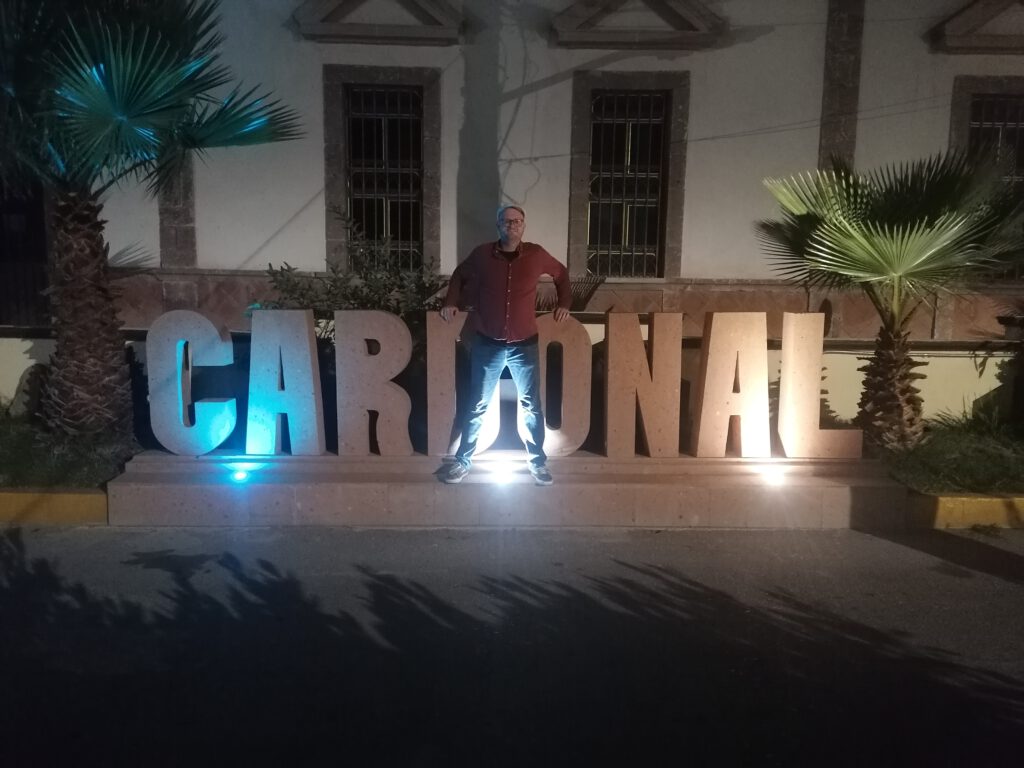
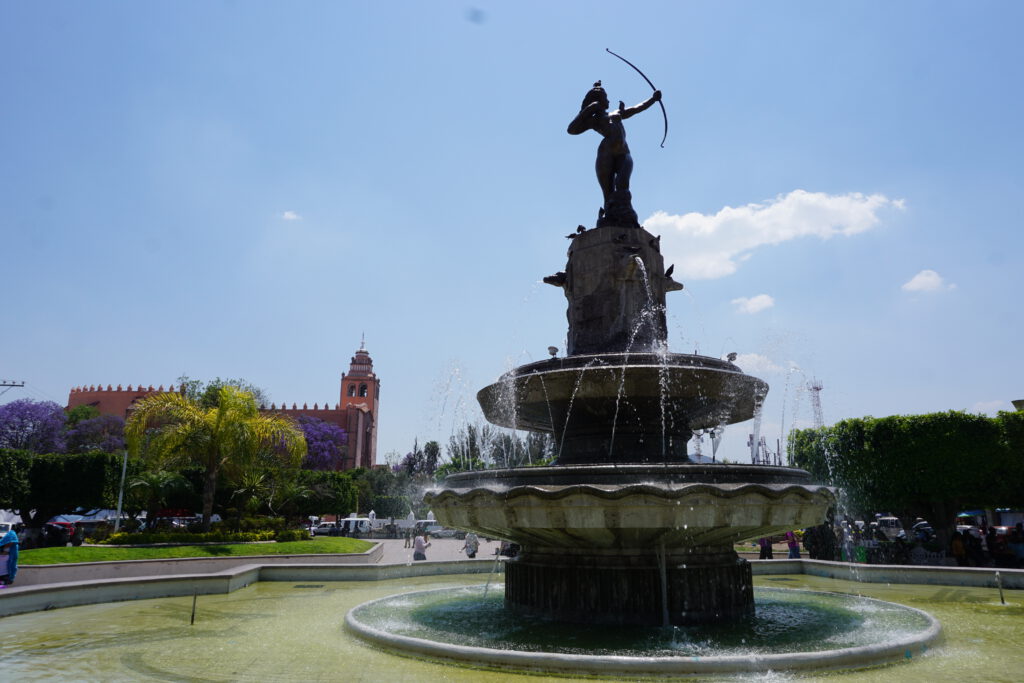
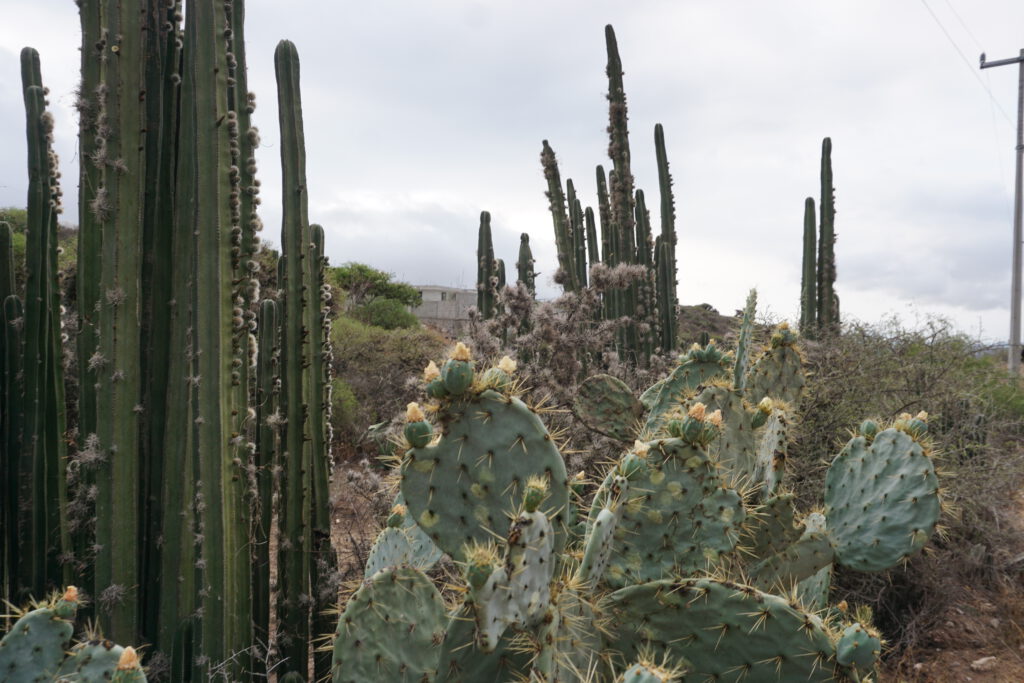
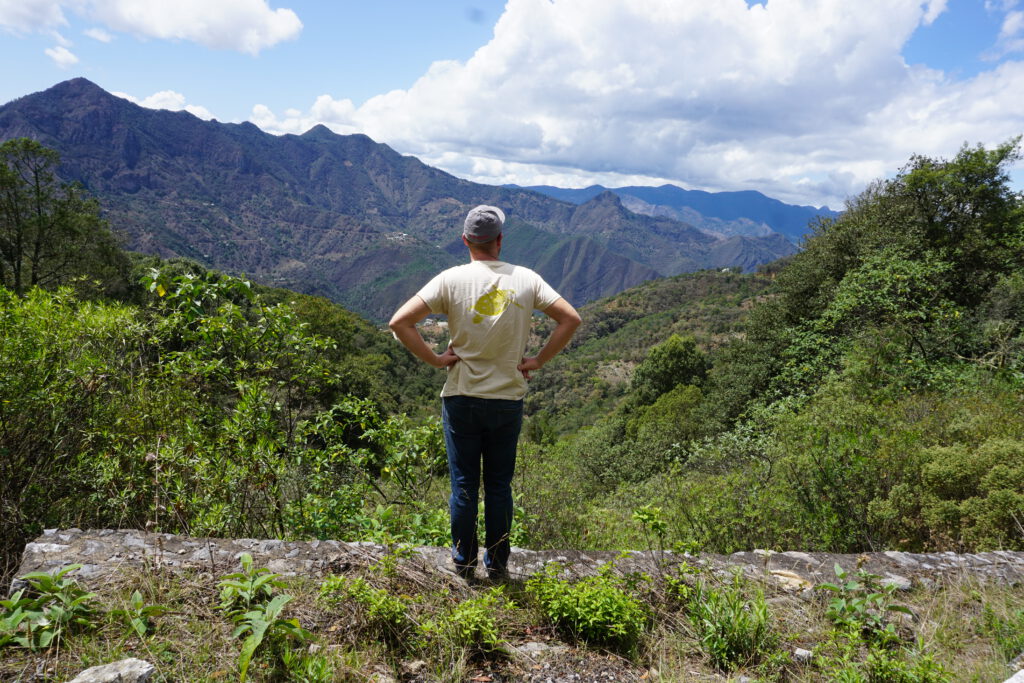
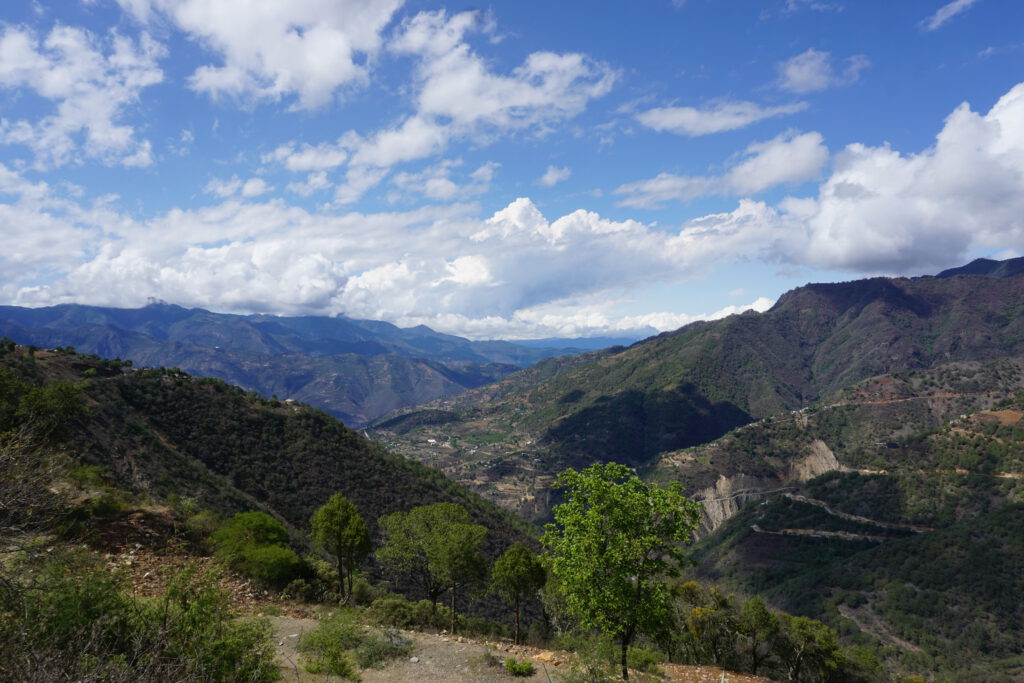
There is one tourist place, however, and what a place it is: Tolantongo and La Gloria lie on either side of a river. But the water in this river is not ice cold like that of a normal mountain river. It is warm like in a bathtub and comes out of the earth here. The fact that an approx. 6m wide river of warm water forms is actually spectacular enough, but there are several spectacular caves to discover, beautiful natural pools and, at La Gloria, a fantastic natural bath in a rock crevice! Staying here in tents by the river or natural pool is indescribable.
But, as I have been there many times before and wanted to visit as many people as possible in the 4 weeks until Marieke joined us, I didn’t go to Tolantongo or La Gloria this time. And that brings us to the beautiful and exhausting part of Mexico: the visits.
The last time I was in Mexico was four and a half years ago, before that it was a maximum of one and a half years between my visits. And so the 4 weeks were packed with countless visits to sooo many people who mean a lot to me. It was wonderful and heart-filling! But it was also exhausting.
Little sleep was matched by excessive eating, because visits to Mexico always involve food. Either they cooked for me or invited me to some restaurant. So there were days when I had two breakfasts, two lunches and of course two dinners – 6 meals is quite a challenge.
But it’s not the first time I’ve been to Mexico 😉 So I was prepared and always ate so much that it wasn’t impolite and that I quenched my appetite for this unbelievably delicious food, but never so much that I couldn’t eat any more. Nevertheless, I didn’t get hungry during the 4 weeks 😀 An expression of Mexican hospitality and also of their culture: a no is only accepted reluctantly, because people think they have done something wrong if you don’t eat. And I don’t want them to feel bad 🙂
Of village festivals, fruit wine and my first tattoo
I don’t want to and won’t bug you here with a list of the names of the 19 families or over 80 friends I visited. I’ll draw a bit of my route and the stops I made, and tell you about a few special experiences.
If I find the time, I’ll also write about 2 or 3 other projects here. The first one I’ll present below – a migrant house that feeds people travelling through Mexico to the US. This is impressive work that I would like to share with you and that you can support if you want to!
But first about my visits: when I came to Mexico from Cuba, I first visited my friend Eduardo in Cuernavaca, about 2 hours away from Mexico. I know Eduardo from my semester abroad in Mexico and was on holiday with him on the coast at that time. Like me, Eduardo studied mathematics, but even then he was a bit more alternative than his fellow students, most of whom now work for Google, Oracle and the like. Eduardo is passionate about juggling and parcour and two years ago he discovered a new passion with which he wants to build up his own business: he ferments different fruit wines and they are really mega delicious!
After 3 days with Eduardo and his mother, I stayed for 2 weeks over Easter in Cardonal, my favourite place in the Mexican mountains. In addition to countless visits, I also took part in the Stations of the Cross at Easter, which are sometimes very elaborately acted out in Mexico. I was able to play a concert with some well-known friends, visit several village festivals and celebrate my birthday. The fact that over 40 friends came together at the celebration means the world to me. It was simply unbelievably beautiful!
I spent the night with my Mexican family: Obdulia and Martin are like parents to me, and Stephanie, Nicole and Christian are like siblings. But I spent at least as much time with my best friend Ivan and his family, I guess I have two Mexican families (if not many more) 🙂
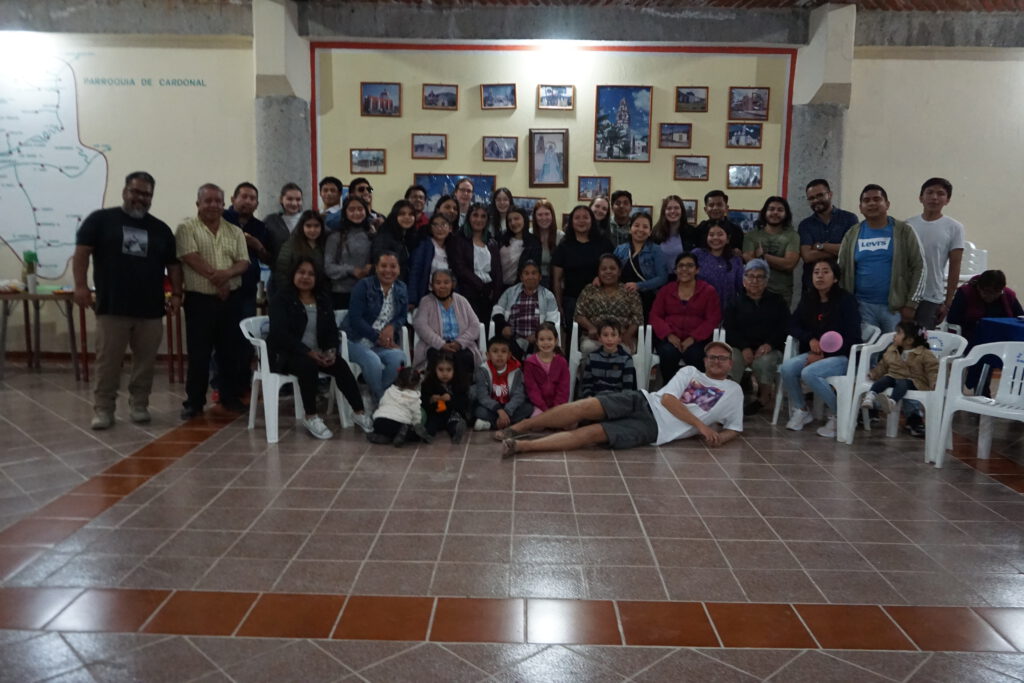
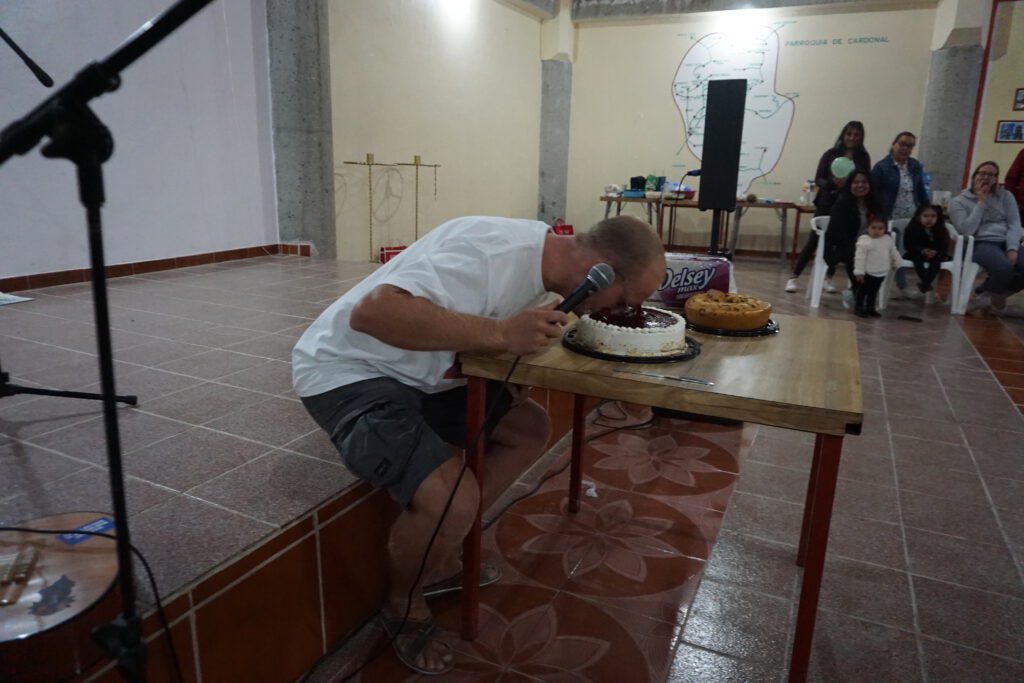
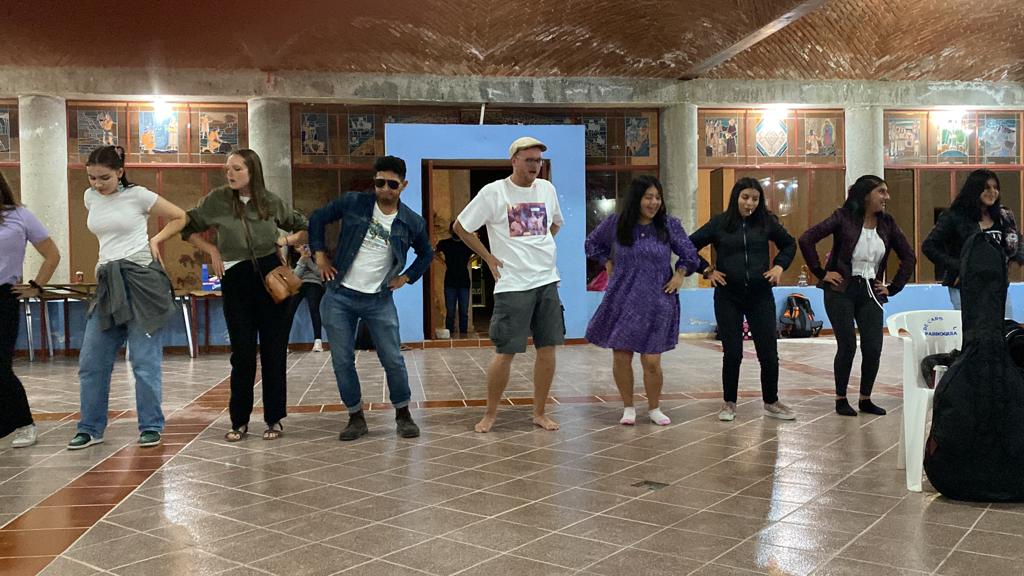
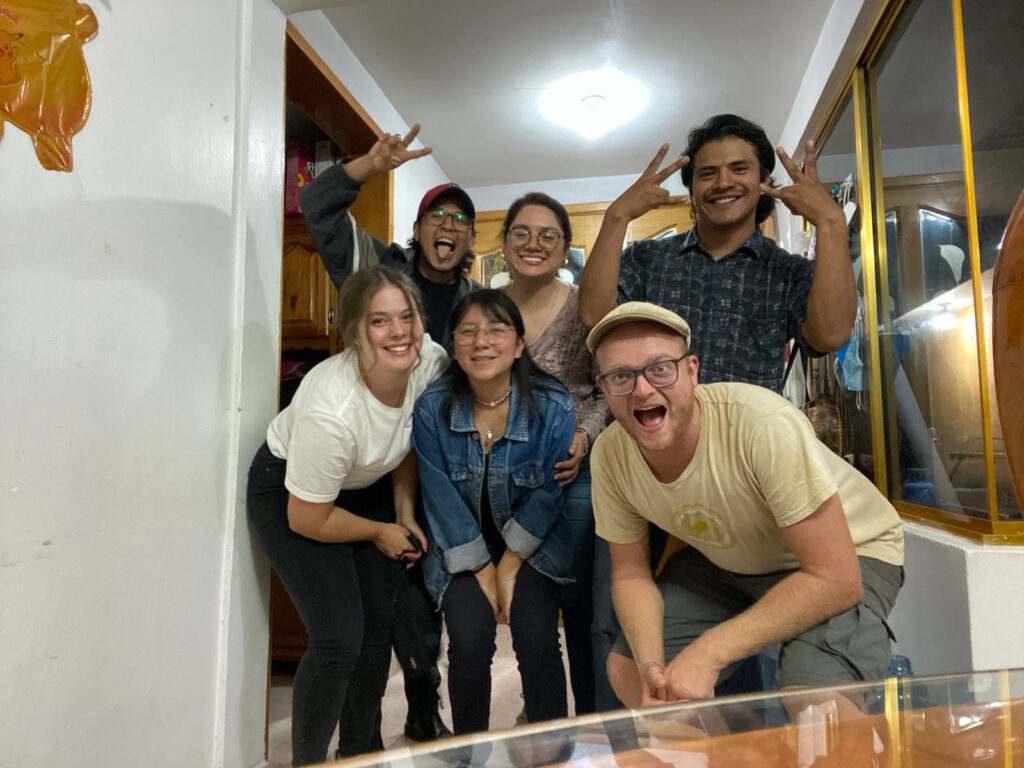
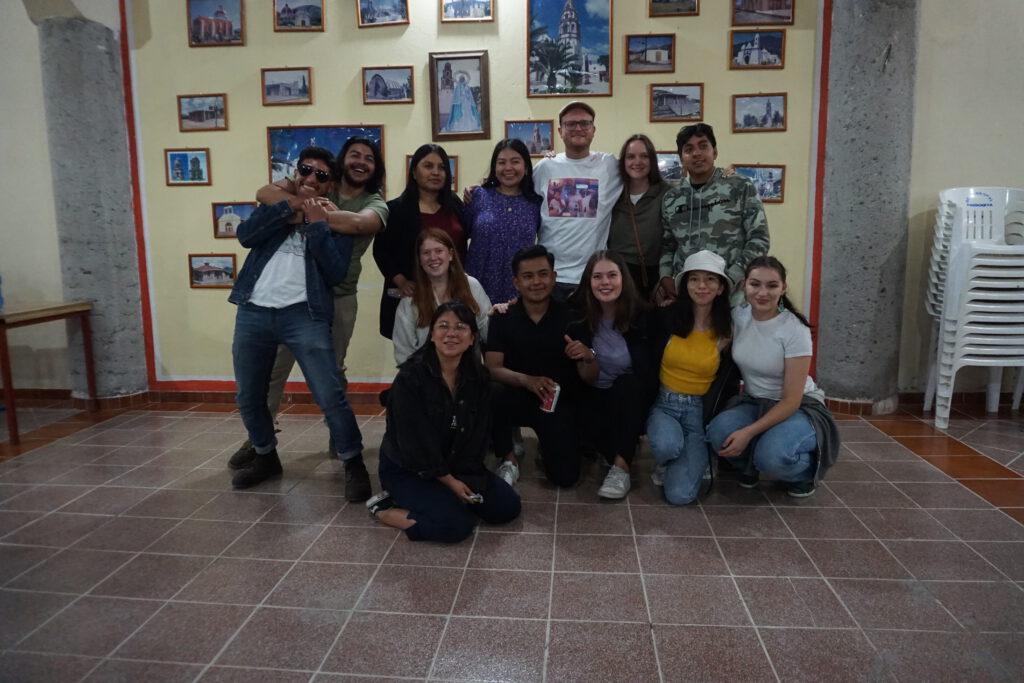
How my friend Goyo, besides the solar boilers and the agave syrup he has been making for years, now also distils the finest schnapps is worth a blog post of its own, which I will write when the opportunity arises.
From Cardonal, after a few tears of farewell, we continued on to Queretaro. With Cristobal, whom I met during his voluntary service in Germany (for the last 7 years there have finally been reverse volunteers coming from Mexico to Germany), I visited Peña de Bernal, where we marvelled at the third highest monolith in the world!
The next day I went on to Guanajuato, where I started my semester abroad 5 years ago and made many friends. Even though many of my friends have moved away from the university, I still know some of them and had some great evenings in the bars. For me, Guanajuato is the most beautiful city in Mexico. It’s colourful, chaotic and has countless roof terraces with wonderful views. This is also where many of the bars are to be found, although I unfortunately noticed that about half of the good bars have fallen victim to Covid. (I’ll spare myself a joke about the Mexican beer brand here).
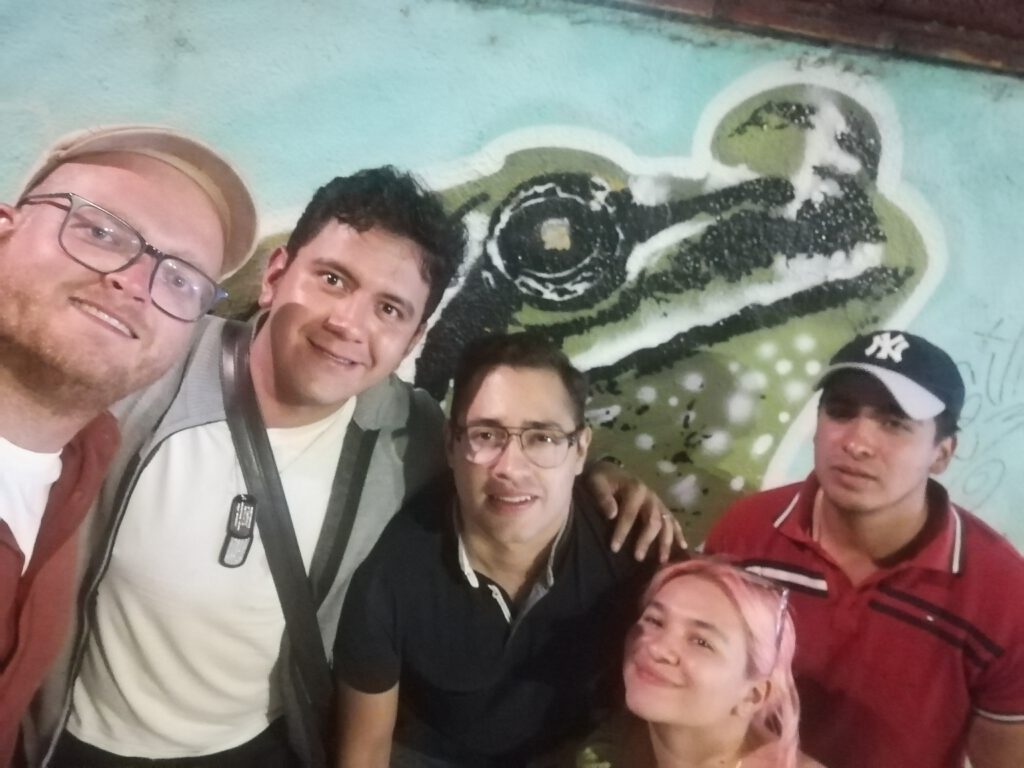
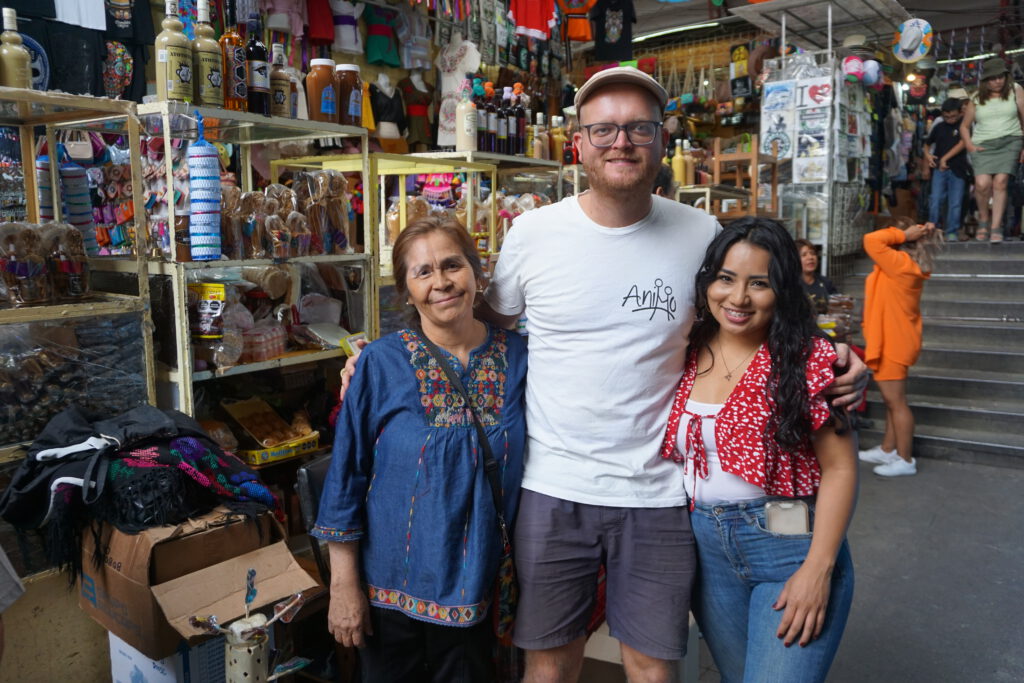
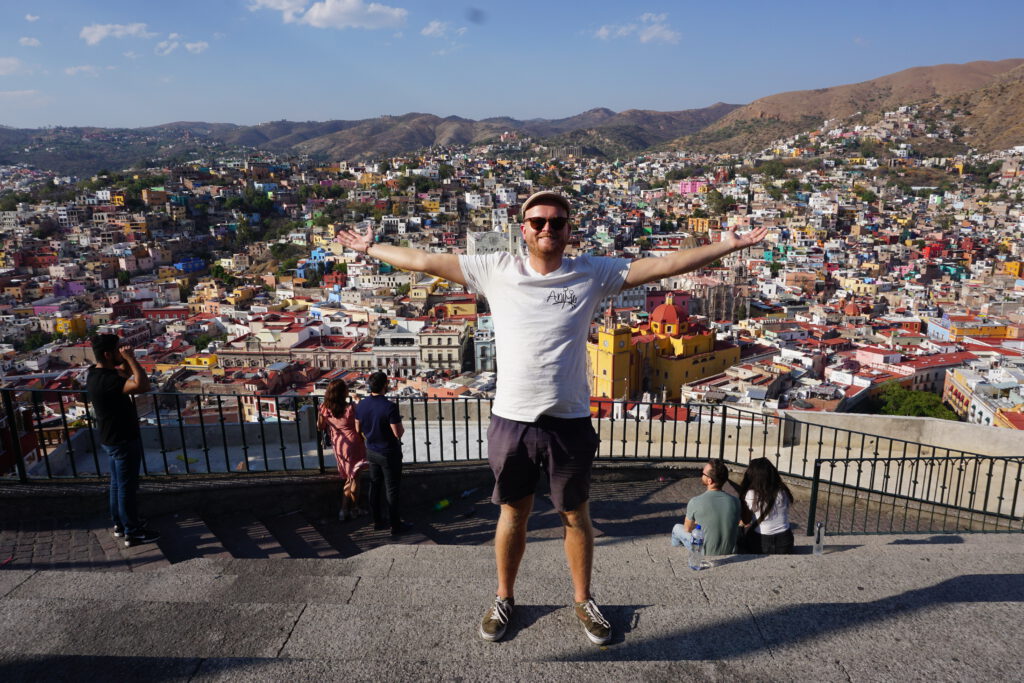

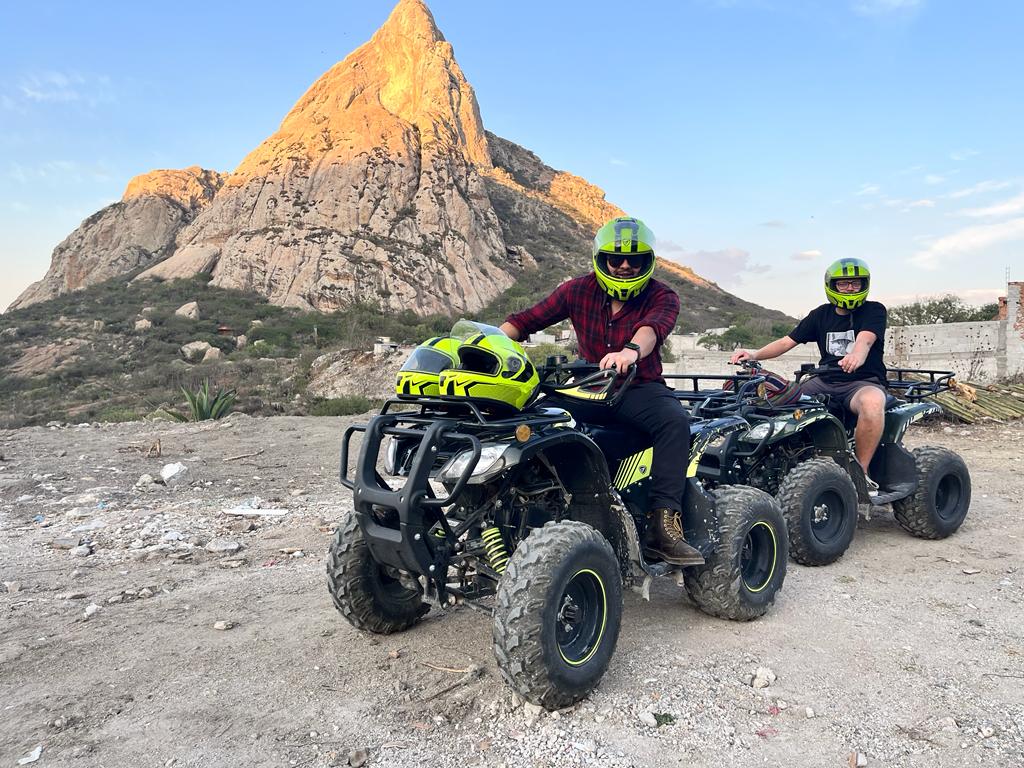
The most emotional reunion in Guanajuato was with my friend Reyna, who came all the way from Mexico City for the weekend. I was very close to Reyna during my semester abroad and our reunion was so nice that we spontaneously decided to get a tattoo together. If you’re curious about what it is, you’ll have to wait until we see each other live 😉
The biggest fair in Mexico and my Mexican granny
On the way from Guanajuato to Guadalajara, the second largest Mexican city, I made a stopover in Aguascalientes. My friend Daniel took me to a concert by the band Enjambre and to the biggest feria in Mexico. A feria is a fair held to celebrate the saints of towns and villages. In most places in Mexico, it is the biggest celebration of the year, perhaps together with the bank holidays on 15 September. And the one in Aguascalientes is the biggest in the country and was really impressive! There are hundreds of food stalls, carousels, arts and crafts, games and several stages throughout the city.
In Guadalajara, where I went the very next day in my visiting frenzy, I mainly visited fellow students from Guanajuato. Those who now work at Oracle or Walmart or others. Every reunion was really nice, but the one with my friends from Guanajuato was especially special because I saw them again for the first time!
In Guadalajara, I also met another ex-volunteer and a nun I lived with when I was volunteering in Cardonal. At that time, I lived with two priests and four nuns. Three of the nuns were relatively young and the fourth in the group, Madre Esther, was already old then. Now she is even more so. But she has not lost her big heart and her admirable missionary spirit (in her case absolutely positive and not so imposing as with the original missionaries). For example, she has complained to me several times that at the age of over 80 she is not allowed to leave the nuns’ home alone, where she is now staying. For me, Madre Esther is like a grandmother and she was just as happy as my grandmother was when I visited her <3
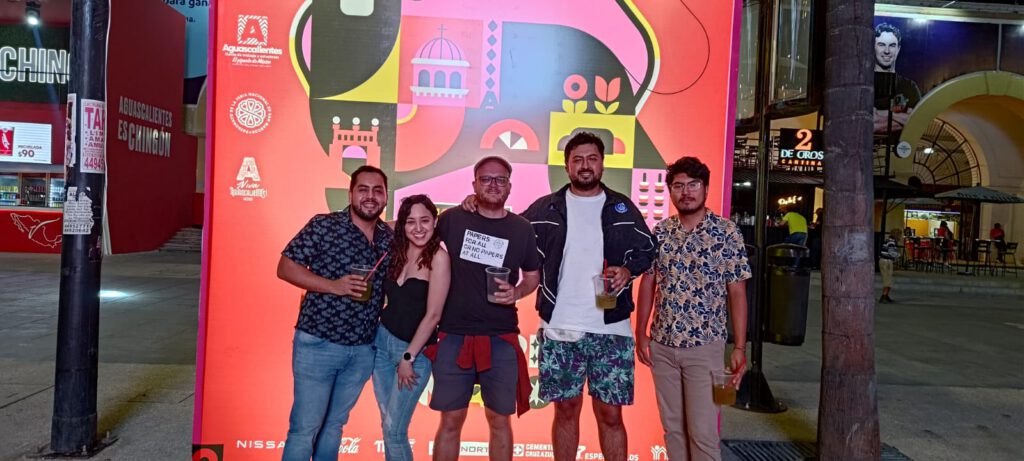
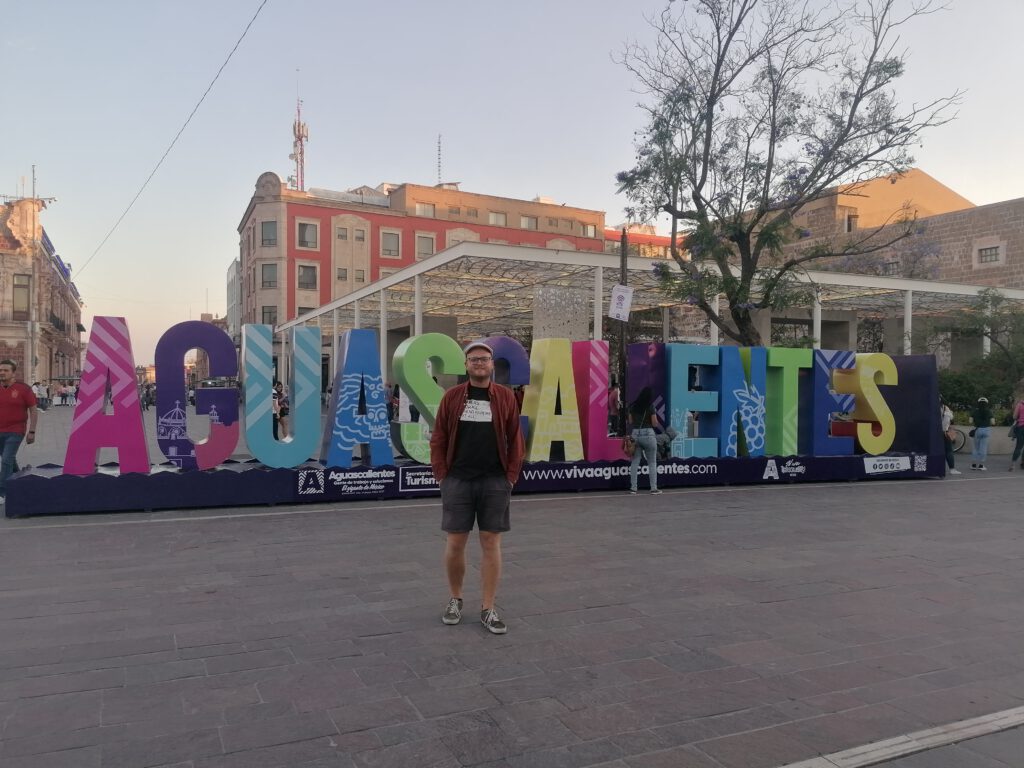
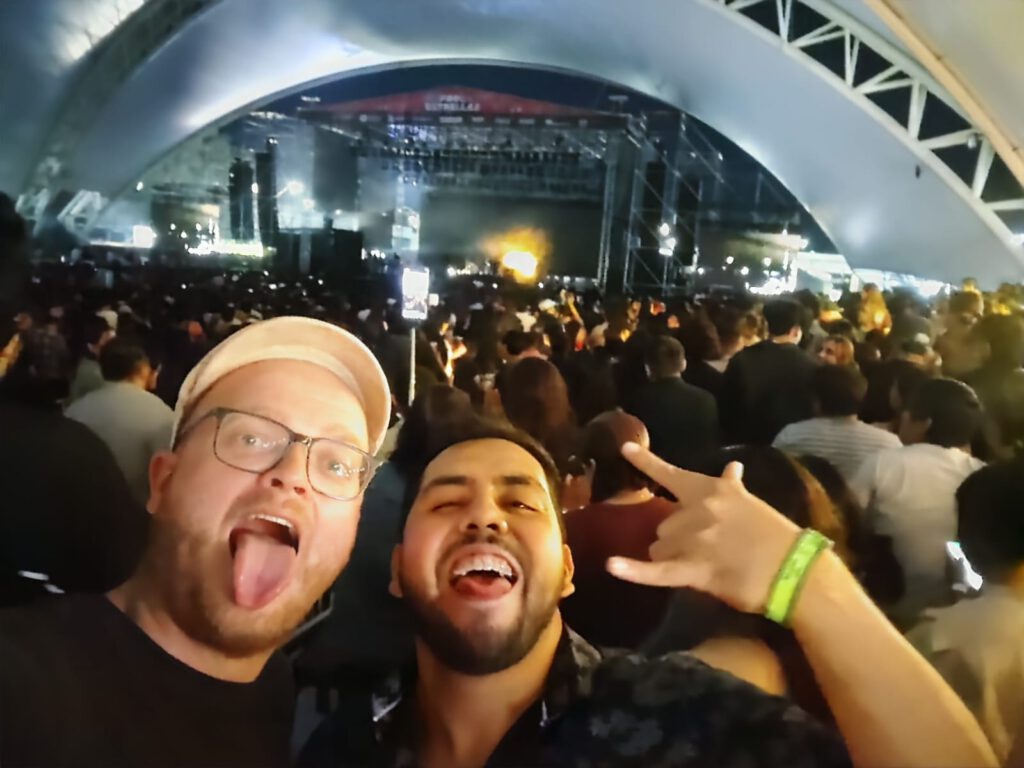
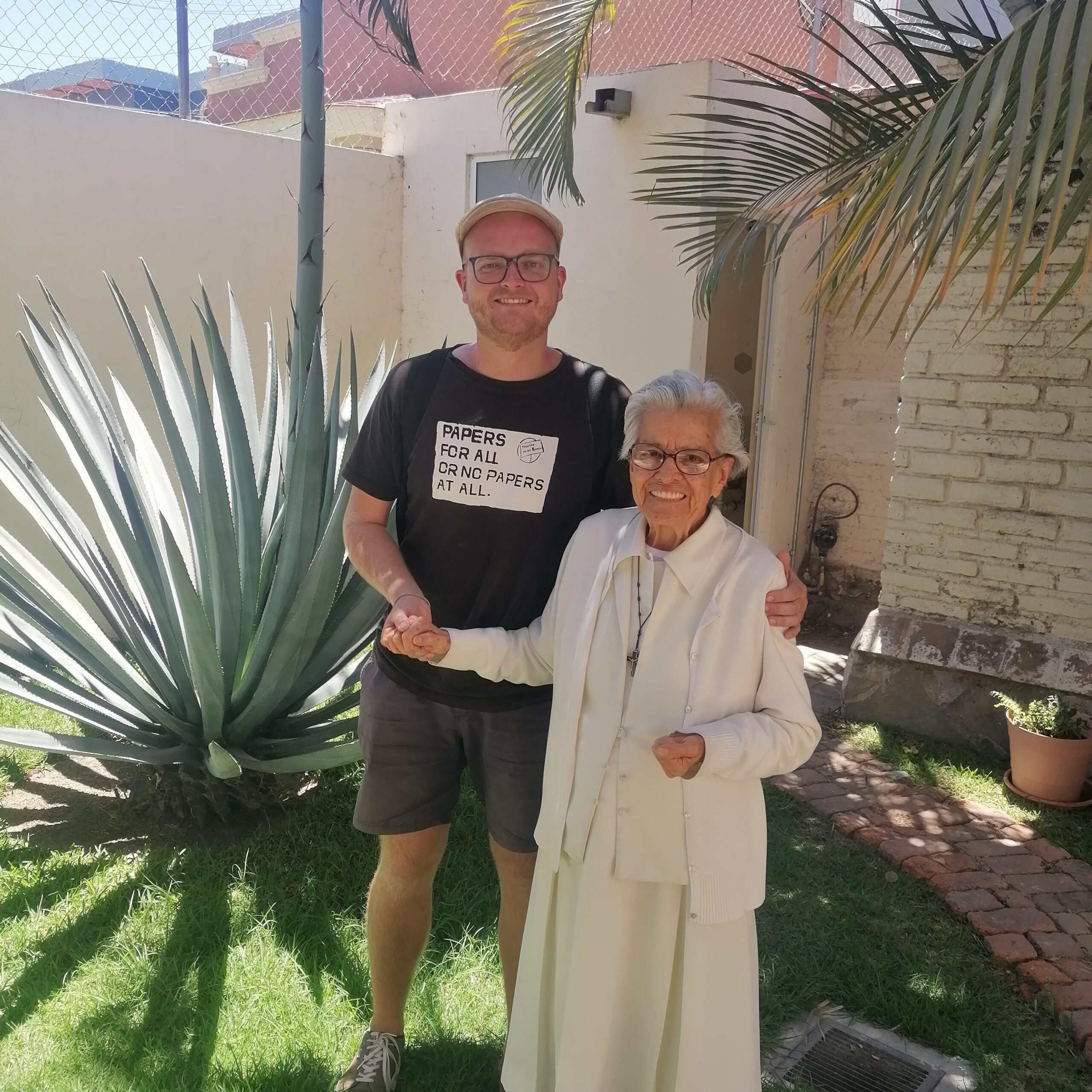
After the second largest city, the final stop of the visit was of course Mexico City, where I stayed with Reyna for 3 nights and met several friends every day. So, extremely exhausted but super happy, I sat down on the 28-hour bus to Cancun to meet Marieke. But the tourist part in the south of Mexico is part of the next blog entry, which I would like to combine with our short visit to Belize 🙂
The migranthouse “El Samaritano” close to Tula
Mexico has long been a transit country for people on their way to the US, because it is impossible not to travel through Mexico by land. And while the number of asylum applications from Mexicans in the US has fallen sharply in recent years – according to the Segob report, it was only 3.5 percent in 2022 – those from Central and South America have risen sharply. 22.7 per cent of applications came from Central America, 18.7 per cent from Venezuela and almost all of these people travel through Mexico.
There are also shuttles that take asylum seekers from Guatemala to the US-Mexico border, but hardly anyone can afford the $1,000 or so it costs. In Guatemala, I spoke to someone who made these shuttle trips through Mexico for years. Those who can afford them are quite safe, because the $1000 includes protection money to various Mexican cartels like the Zetas.
But since most cannot afford this, they have to find other ways to cover the minimum 2000km through Mexico. Many use the goods trains that pass through Mexico. Among Mexicans and asylum seekers, the train is only called “La Bestia” because it is so dangerous to jump on it and then jump off again somewhere else. Only recently, a man from Venezuela fell off the train near Tula and had to have both legs amputated – a terrible fate that is only one of many.
In addition, asylum seekers in Mexico are often treated like scum both by gangs and sometimes by the police. All this after they have already spent weeks or months on the road before Mexico. Many people from Venezuela also cross the extremely dangerous jungle of the Darién Gap between Panama and Colombia, where gangs also frequently ambush them.
To support the people in Mexico, there are many so-called migrant houses, which are mainly located along the La Bestia train route. One of these extremely important houses is the migrant house “El Samaritano” near Tula.
We have been supporting “El Samaritano” for many years with the association animo e. V. and without having visited it, the project was a matter close to my heart, as flight & migration have been my political focus for years.
Animo e. V. is an association of former Mexico volunteers who work for intercultural exchange between Mexico and Germany.
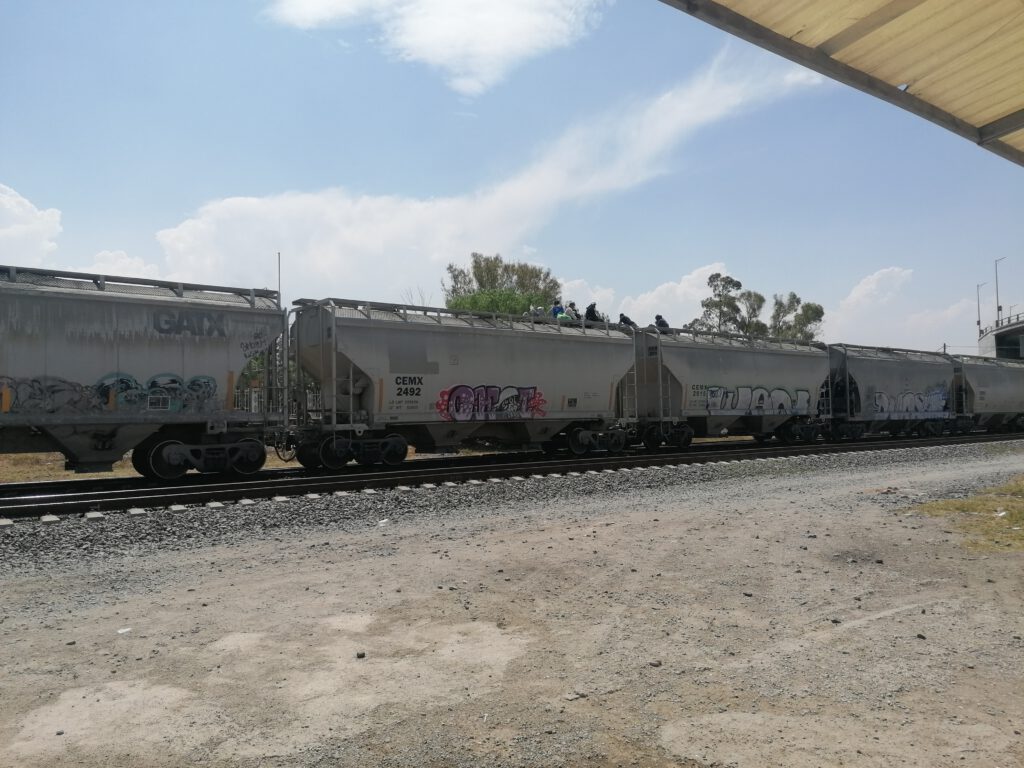
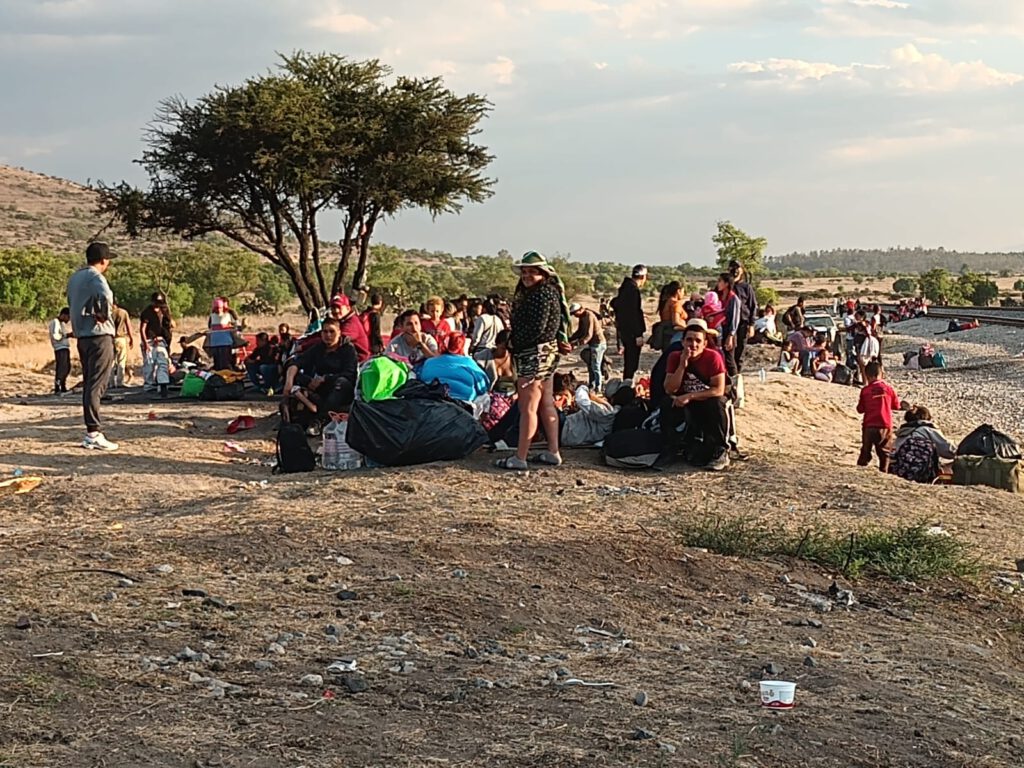
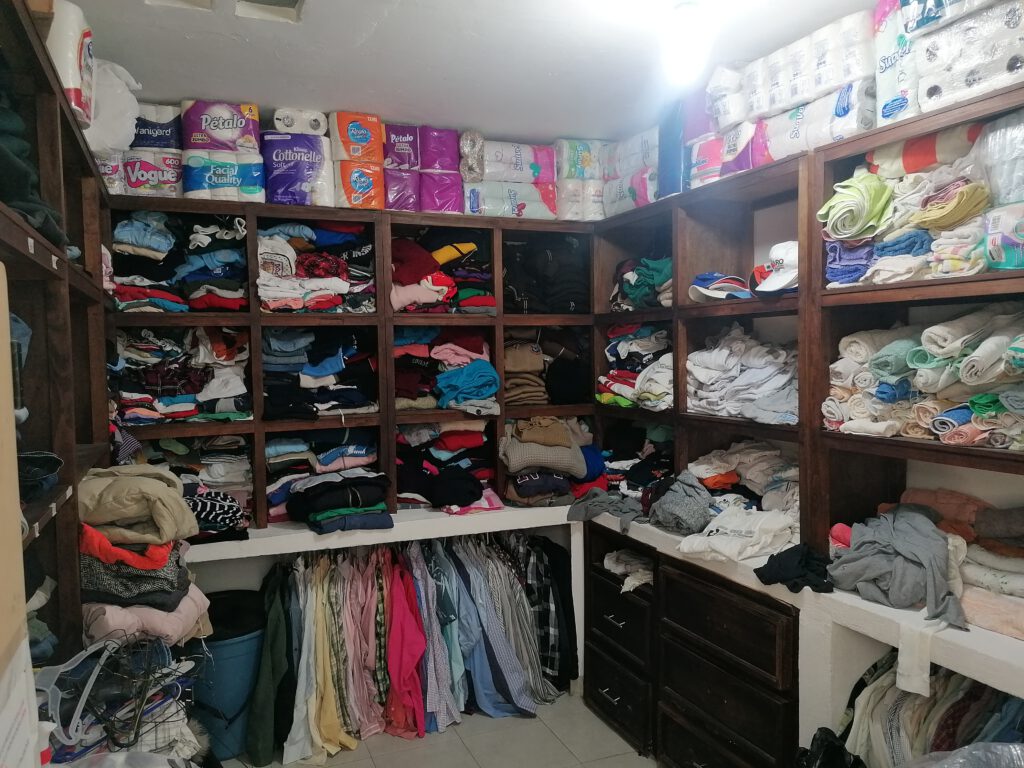
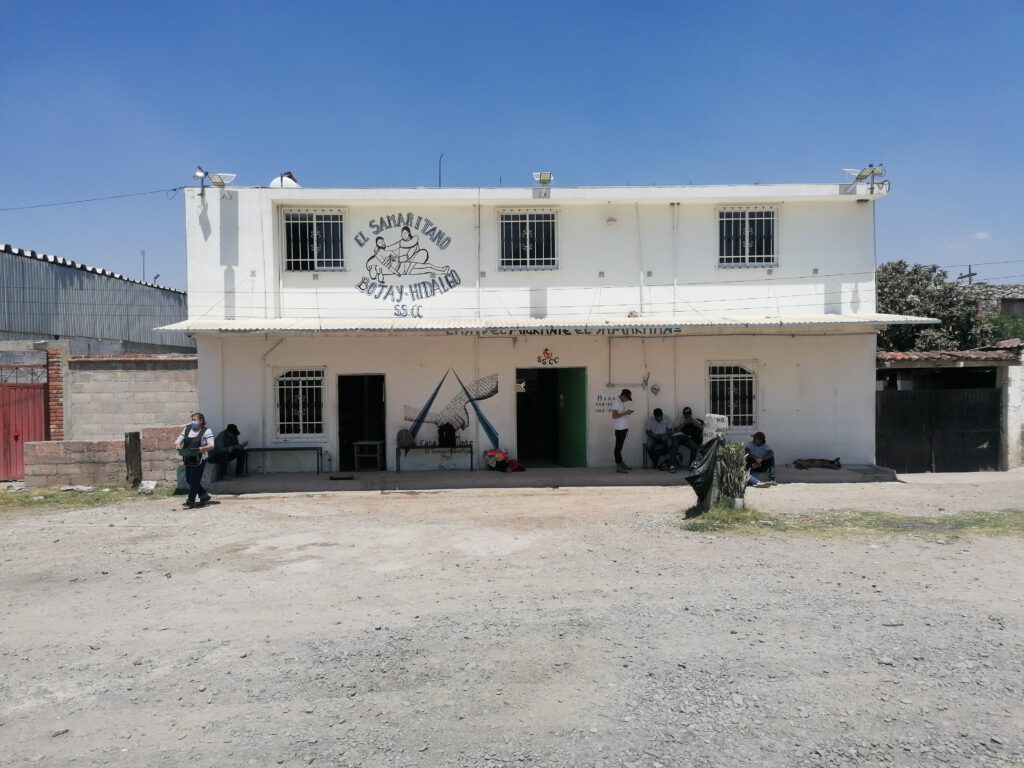
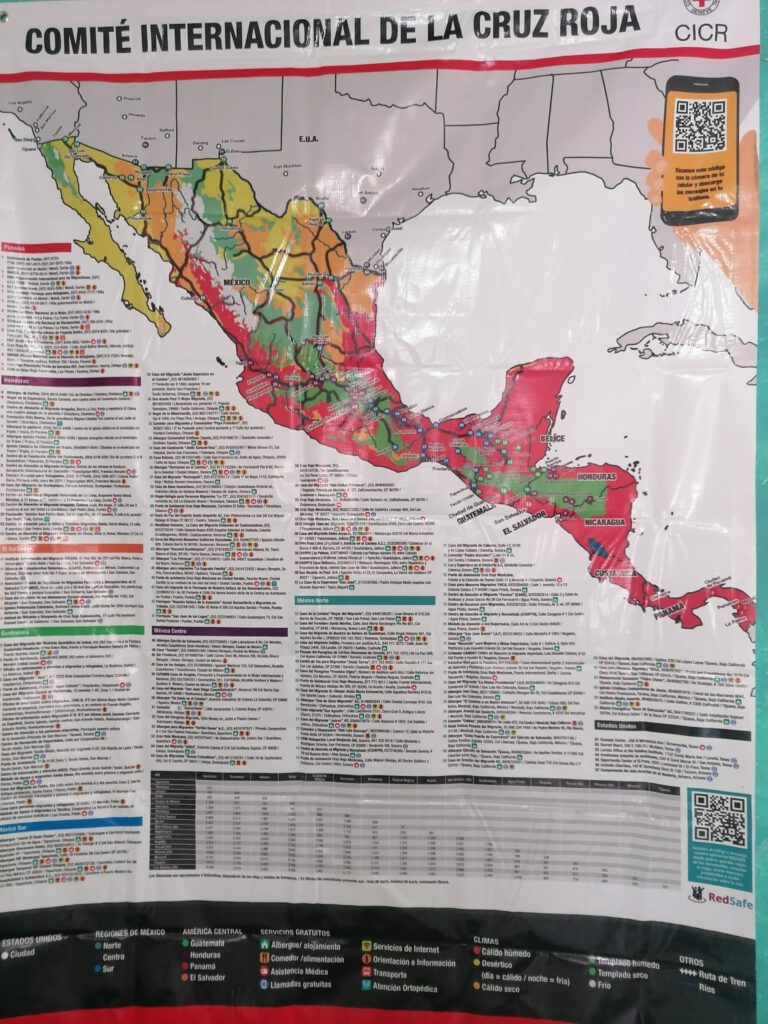
When, during my visit to Mexico, I finally drove by the house in person, where several volunteers and friends of mine have helped in recent years, I was even more impressed than I was by the reports.
Near Tula, there is a place where the train regularly stops or slows down, so it is possible to hop on and off. There, “El Samaritano” opens its doors Tuesday to Sunday to serve the people. I was able to join the process for one day and also help out a bit.
On that day, about 15 asylum seekers arrived, most of them from Honduras or Venezuela. First, the people, who are usually very hungry, are offered breakfast. After breakfast, they can take a shower and get clothes from a clothing collection in case they need new clothes. Most of them had small backpacks with everything they had or still had. Of course, there is also a pharmacy so that people can get medical care if necessary.
Those who want to can rest afterwards. There is an extra rest area for women and children. When everyone had had breakfast and washed up, there was time for me to talk to the people and also to make some music with and for them. The fates and stories I overheard often reminded me of refugees I met during rescue missions in the Mediterranean. There were young men who left their families and sometimes even their wives and children behind in the hope of being able to provide for them better from the USA, as well as entire families who travelled together.
And unfortunately, the way asylum seekers are dealt with in the US is similar to the way they are dealt with in Europe. In the last three years, the US deported about 2.7 million people, 2.3 million of them to Mexico.
After the talks, we had lunch together before the people continued on their way. It was a depressing feeling to watch them leave.
For me, the work that Sister Luisa and so many other volunteers do is incredibly important and I am glad that I was able to get a better impression.
If, like me, you would like to support the project, I would be very happy to do so and you can transfer money to the animo e. V. account. 100% of the donations will go to “El Samaritano”. Animo is an honorary association that bears the extremely low administrative costs through membership fees.
animo e. V.
IBAN: DE98 4006 0265 0018 4487 00
BIC: GENODEM1DKM
Alternatively, you can send me money via PayPal to kai-echelmeyer@web.de, which I will then transfer 100% to animo.
Thank you very much for your support!

